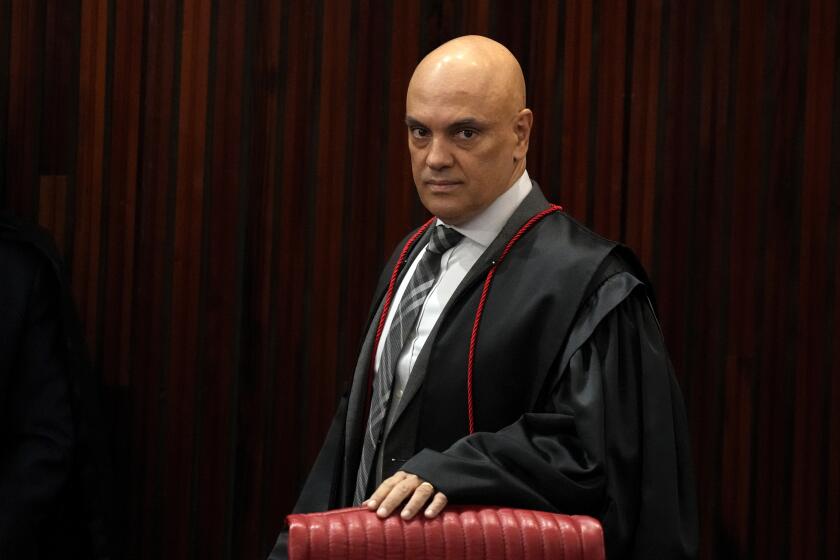Extra Payments Mean Faster Loan Payoff
Most people would love to pay off their 30-year mortgages in 23, 21 or even 19 years. But most people don’t realize how little it takes to do so.
Lenders say it takes only a little extra cash every month to take a big bite out of the mortgage over time. A few simple tricks--as simple as adding $50 to each monthly payment or making 13 mortgage payments a year rather than 12--can pay off a house years in advance and save tens of thousands of dollars in interest payments on even a fairly modest house.
By increasing payments on a 30-year mortgage by as little as 5%, a homeowner can cut the length of the mortgage to as little as 23 years and a couple of months--22% shorter than 30 years. Increasing the payments by about 10% can cut the mortgage to 19 years and nine months.
It’s a financial version of the fable of the tortoise and the hare. A consumer doesn’t need to come up with a $10,000 chunk to make a dent in the mortgage. Slow and steady brings the big win.
But bank executives say few people take advantage of the opportunity.
“There are some people who do it, but relatively few,” said Ed Murn, president of Maryland National Mortgage Corp., a unit of MNC Financial Inc., the state’s largest bank holding company. “People live right up to their neck. This just isn’t high on their list of monthly priorities.”
The reason consumers can get a big bang for their prepayment buck is simple, said Tom Caudill, senior vice president of Maryland National Mortgage. Because a mortgage piles up interest on the unpaid balance, by paying an extra $50 each month the consumer not only gets the $50 out of the way, but that $50 doesn’t accrue any interest in months to come.
“Every time you make an additional payment equal to the next principal payment, you cut one month off the life of your loan,” Caudill said.
The key is to start early and be consistent, said Linda D. Gannacone, senior vice president at Second National Federal Savings Bank in Annapolis, Md. And to make sure the extra money a consumer sends gets credited to principal only, she recommends enclosing a note with the payment that explains what the extra money is for.
Because the strategy costs you money early and pays off in the long run, she said, slow but steady prepayment works best with houses you plan to stay in rather than trade up.
It’s important to start prepaying early because mortgages are front-loaded--that is, most of the interest the bank will charge over the life of the loan kicks in during the first few years. Payments in the last few years are mostly principal. So to cut the total interest bill on a house, consumers have to move while the interest is still piling up.
There are different ways to do it. Caudill says one good way to get ahead is to get an amortization table, figure out how much of the next mortgage payment represents principal, and add that amount to what’s due. For example, if $90 of a $1,000 payment represents principal (the rest being taxes, insurance and interest), then send $1,090.
Gannacone said Second National often recommends making the equivalent of 13 mortgage payments a year. Perpetual Mortgage Co. urged one consumer recently to consider adding either $50 or $100 to monthly payments to shorten the term.
According to an analysis by Perpetual Mortgage, a consumer with a 30-year mortgage of $103,850 at 9.5% has a monthly principal and interest payment of about $870. By adding $50 to each month’s payment, that loan pays off in 23.4 years. Add $75, and the mortgage pays off in 21.3 years. At an extra $100 a month--still only about 10% of the total mortgage payment--the loan pays off in 19.75 years.
Pushing up the date of the mortgage-burning party by 10 years is a nice thought, but even more telling is the overall interest savings. Adding $50 a month saves more than $55,000, and adding $100 a month saves a total of more than $84,000.
Gannacone said making a 13th mortgage payment each year has a similar effect. Assuming the homeowner makes the extra payment each year in the same month in which the mortgage started, a 9%, 30-year note pays off in 22 years and three months.
But most of the savings come late in the life of the loan, she notes. At the end of the fifth year of a 9%, 30-year $100,000 mortgage, a home buyer will show $4,119 in equity without making any extra payments. With the 13th payment each year, the equity at that point would be $8,971, she said. The balance will be $91,028 instead of $95,880.
After seven years, the loan will be $86,150 instead of $93,640. But after 22 years, the balance will be $1,834 with the extra payment once a year, and $54,922 for those who make only their regular payments.
And making the extra payment each year will cut the total interest tab only by a little bit in the early years of the mortgage, allowing homeowners to hold onto their highly prized tax deduction for mortgage interest in the years when, for most people, it is most valuable, Gannacone said.
Average Rates for Residential Mortgages Average rates for residential mortgages as of June 21, 1991.
Survey Conventional Mortgages Adjustable Mortgages Area 15 Year 30 Year Composite 1 Year Composite National 9.43% 9.75% 9.60% 7.26% 7.63% California 9.71 10.00 9.86 7.51 7.58 Connecticut 9.44 9.77 9.63 7.13 7.46 Wash. D.C. 9.30 9.63 9.48 6.93 7.42 Florida 9.43 9.76 9.61 7.18 7.49 Mass. 9.44 9.77 9.61 7.11 7.69 New Jersey 9.37 9.69 9.54 7.31 7.81 N.Y. Metro 9.45 9.77 9.62 7.28 7.70 New York 9.54 9.85 9.71 7.31 7.68 N.Y. Co-ops 9.74 10.06 9.94 7.70 8.15 Pa. 9.19 9.57 9.39 7.16 7.42 Texas 9.30 9.65 9.48 7.28 7.56
SOURCE: HSH Associates, Butler, N.J.
More to Read
Inside the business of entertainment
The Wide Shot brings you news, analysis and insights on everything from streaming wars to production — and what it all means for the future.
You may occasionally receive promotional content from the Los Angeles Times.






